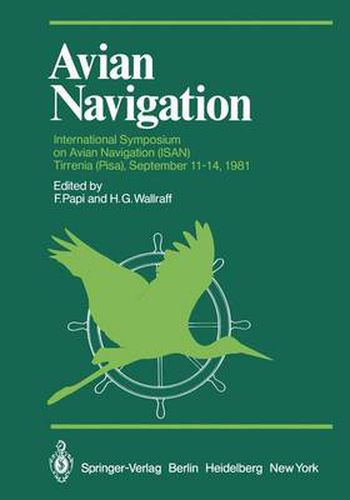Readings Newsletter
Become a Readings Member to make your shopping experience even easier.
Sign in or sign up for free!
You’re not far away from qualifying for FREE standard shipping within Australia
You’ve qualified for FREE standard shipping within Australia
The cart is loading…






This title is printed to order. This book may have been self-published. If so, we cannot guarantee the quality of the content. In the main most books will have gone through the editing process however some may not. We therefore suggest that you be aware of this before ordering this book. If in doubt check either the author or publisher’s details as we are unable to accept any returns unless they are faulty. Please contact us if you have any questions.
Right from the start of this century, field observations and the patient ringing of birds have made available a growing mass of data on the breeding and resting areas of migratory species and on the course, period and duration of their seasonal flights. Considered as a whole, this work on migration morphology commands admiration, and when view ed in detail it reveals fascinating insights into the extraordinary naviga tional performances of many bird species, which find their way over enormous distances. Yet only a few dozen physiologists are actively trying to answer the question of how these performances are achieved. Experimental work on migratory birds raises many difficulties, some of them insuperable, so that many researchers carry out their experiments on the homing pigeon, which is constantly motivated by homesickness and ready to display its ability to flyaway home. Many of the problems connected with bird navigation are still un solved, but a rapidly growing body of results is being produced along with a variety of new ideas and approaches. A clear majority of the stu dents of bird navigation met in September 1981 in Tirrenia, a seaside resort on the Tyrrhenian coast, where each of them offered new in sights into his or her recent investigations. Their contributions have been connected in this volume, which provides an up-to-date conspec tus of the stage reached by research in this field.
$9.00 standard shipping within Australia
FREE standard shipping within Australia for orders over $100.00
Express & International shipping calculated at checkout
This title is printed to order. This book may have been self-published. If so, we cannot guarantee the quality of the content. In the main most books will have gone through the editing process however some may not. We therefore suggest that you be aware of this before ordering this book. If in doubt check either the author or publisher’s details as we are unable to accept any returns unless they are faulty. Please contact us if you have any questions.
Right from the start of this century, field observations and the patient ringing of birds have made available a growing mass of data on the breeding and resting areas of migratory species and on the course, period and duration of their seasonal flights. Considered as a whole, this work on migration morphology commands admiration, and when view ed in detail it reveals fascinating insights into the extraordinary naviga tional performances of many bird species, which find their way over enormous distances. Yet only a few dozen physiologists are actively trying to answer the question of how these performances are achieved. Experimental work on migratory birds raises many difficulties, some of them insuperable, so that many researchers carry out their experiments on the homing pigeon, which is constantly motivated by homesickness and ready to display its ability to flyaway home. Many of the problems connected with bird navigation are still un solved, but a rapidly growing body of results is being produced along with a variety of new ideas and approaches. A clear majority of the stu dents of bird navigation met in September 1981 in Tirrenia, a seaside resort on the Tyrrhenian coast, where each of them offered new in sights into his or her recent investigations. Their contributions have been connected in this volume, which provides an up-to-date conspec tus of the stage reached by research in this field.